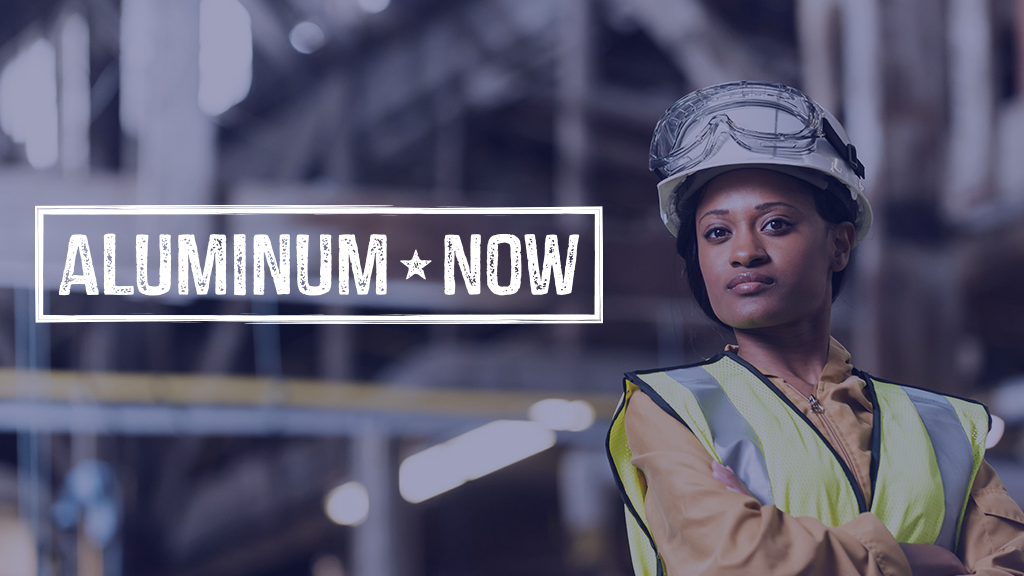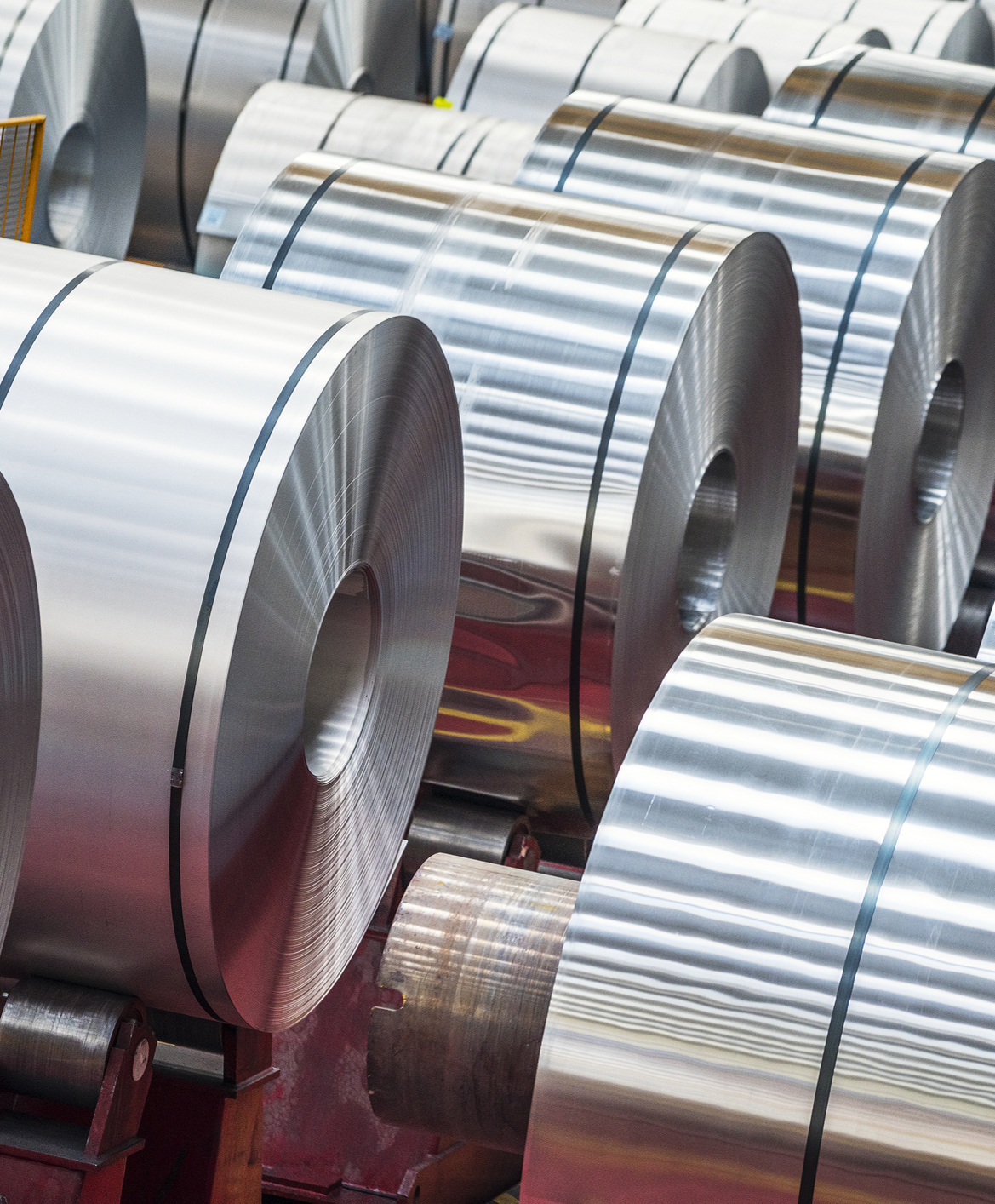Author: Signal Group
OECD Report Confirms that Foreign Government Subsidies Have Negative Effects on Market-Based Producers in the U.S.
Today, the American Primary Aluminum Association (APAA) released a white paper building upon a recently released report by the Organization for Economic Cooperation and Development (OECD) confirming that subsidies provided by foreign governments to primary aluminum producers in those countries are widespread across multiple regions and that these subsidies are having negative effects on market-based producers in the United States and elsewhere.
The APAA’s full white paper can be downloaded here.
“The OECD’s report confirms that widespread subsidization across multiple countries is creating a race-to-the bottom whereby governments who provide subsidies maintain and expand capacity and countries where subsidies are not provided like the U.S., see capacity shrink,” said Robert DeFrancesco, Counsel for APAA. “The report found that from 2013-2017, significant subsidies were provided by China, India, the Gulf Cooperation Council (GCC) countries, Norway, Australia, and Canada. It is no coincidence that the aluminum industries in each of these countries were able to expand their capacity despite an ongoing collapse in the global aluminum price. Further, the subsidies themselves distort market dynamics and create a misperception that these regions are inherently more cost-competitive than other non-subsidized regions; without the subsidies producers in those regions would not be able to maintain and expand capacity.”
“The OECD’s recent report underscores assertions that the APAA has been making for months – that illegally subsidized primary aluminum has crippled the U.S. primary aluminum industry,” said Mark Duffy, CEO of the APAA. “The cheating and illegal subsidization, carried out by countries like China, India, the GCC, and others, have created an uneven playing field for American primary aluminum producers. The Section 232 aluminum tariffs help level the playing field for American workers and restore an industry decimated by unfair foreign competition.”
The data shows that many producers receive subsidies from multiple countries which help to maintain and expand capacity that would otherwise be uneconomic to operate.
While China is a significant contributor to the problem, it is not the only contributor. The International Trade Commission (ITC), and now the OECD report, confirmed that financial and input subsidies provided by governments around the world have tilted the scales in favor of producers in those regions at the expense of American producers. Without these subsidies, global capacity and production would be lower and prices higher allowing market-based players to compete on a more level playing field.
These findings support the continued application of the Section 232 aluminum tariffs to be broadly imposed across all import sources and countries. The recently released OECD report can be viewed here: https://bit.ly/2Ayynaw
About the American Primary Aluminum Association (APAA): The American Primary Aluminum Association represents the majority of America’s primary aluminum industry and advocates to advance the interests of the domestic industry and its workers through the Aluminum Now campaign. APAA is registered and incorporated in Washington, DC and operates as a non-profit trade association. For more, please visit: www.aluminumnow.org
DOWNLOAD: OECD Report Confirms Continuous Government Intervention and Subsidization in the Aluminum Industry Across Multiple Markets: A Comprehensive Remedy is Required to Address the Distortive Effects
Please download the PDF for the full report prepared by Counsel to the APAA.
Novelis Reports Negligible Impact From Trump Aluminium Tariffs
Atlanta’s rolled and recycled aluminium firm Novelis Inc. has seen few short-term negative effects of the Trump administration’s blanket tariffs on aluminium, according to company execs. However, the firm still plans to petition the government for exclusions on certain cross-border aluminium shipments.
Company execs told local media in upstate New York that the biggest impact to the firm was the tariffs assessed against the one-third of its aluminium shipped in from Canada.
“In the near term it wouldn’t have a huge impact on the business,” explained CEO Steven Fisher to MSNBC this spring. “Unfortunately with a higher tariff that’s going to mean higher prices to our customers and end consumers.”
Fiona Bell, Novelis’ Director of Communications and Government Affairs for North America, said that the company continues to see a significant call for aluminium in several major sectors.
“Novelis is experiencing strong demand for high-strength, lightweight aluminum from our customers across the automotive, beverage can and specialties markets. As a result, our team in Oswego recently achieved several records in production while maintaining safe and efficient operations.
“Novelis is seeing a limited impact from the import tariffs on metal crossing the border into the U.S. and to offset this, we have applied for product exclusions from the Department of Commerce.”
Despite tariffs making supplies from its northern neighbors more expensive than usual, Novelis’ plant in Scriba turned in record-breaking numbers in October.
“We just finished a $10 million upgrade to one of our recycling facilities,” explained Plant Manager Kevin Shutt. In addition, the Scriba plant is planning to upgrade operations with a US$13.5-million exhaust system in the near future.
“Automotive demand is very strong,” he continued. “Right now we are in a great position, we have more sales than we have capacity, so every pound that we can produce we can sell.”
Novelis is a subsidiary of Mumbai’s Hindalco Industries Ltd. Based in Atlanta, the firm accounts for almost half of Hindalco’s consolidated revenue. The world’s largest recycler of aluminium, Novelis conducts operations in ten different countries, employs around eleven thousand people, and reported US$10 billion in revenue for the most recent fiscal year.
DOWNLOAD: Comments regarding United States-Mexico-Canada Agreement: Likely impact on the U.S. Economy and on Specific Industry Sectors
Aluminum Tariff Is a Boon Even If Beer Costs More, Report Says
President Donald Trump’s aluminum tariff won’t make beer taste better, but it’s succeeded in boosting the economy, according to a report published Tuesday by the Economic Policy Institute.
The research, from the left-leaning think tank, argues that tariffs imposed on aluminum and steel have led to increases in U.S. employment, production and investment.
The Beer Institute, a trade association for the American brewing industry, called tariffs on aluminum a “tax on beer,” saying that cans make up more than 11 percent of the manufacturing cost in the U.S.
“We’ve seen a 5 to 10 percent increase in our costs despite our aluminum being sourced domestically,” said Ryan Krill, co-founder of the Cape May Brewing Co. in New Jersey. “We’ve estimated the total cost increase will be $30,000 next year. I appreciate what the Trump administration is trying to do, but there’s been unintended consequences.”
The EPI says benefits have outweighed negatives.
Beer industry claims of harm from the aluminum tariff were in “downstream distribution sectors,” according to the EPI report, “with 91 percent of the 20,300 jobs lost in ‘retailing, supplier and induced’ segments.” Changing tastes have more to do with any decline in beer’s popularity than a 10 percent tariff on aluminum, it said.
U.S. beer sales by volume fell 1.2 percent in 2017, according to the Brewers Association.
Richard Trumka, head of the AFL-CIO, is chairman of EPI’s board of directors.
Steel and aluminum tariffs are not hurting the economy, study says
Supporters of the tariffs imposed by the Trump administration on steel and aluminum are making the case that they have worked as intended, without the huge job losses opponents had predicted.
“We found absolutely no evidence of broad, negative impacts on the economy of steel and aluminum tariffs to date,” said Robert E. Scott, senior economist at the Economic Policy Institute, who authored the report with support of the U.S. aluminum company Century Aluminum.
Ten percent tariffs on aluminum were announced in March. Since then, the institute note, three smelters have being restarted and one has announced a capacity expansion. It said the U.S. aluminum companies have added about 300 jobs, and companies that process aluminum into finished products have expanded, generating $3.3 billion in investments that could employ 2,000 more workers. Overall, U.S. manufacturing has added more than 200,000 jobs since just before the tariffs were put in place, according to the Labor Department’s November jobs report last week.
Tariffs collected on aluminum products increased by $124 million in October, despite a 4 percent decline in the value of imports, according to data released by Tariffs Hurt the Heartland and compiled by The Trade Partnership.
But the full effect of the higher costs and disrupted supply chains are still working their way through the economy, “It’s very easy to say ‘Ah, ha, these haven’t happened yet.’ … The last thing anyone wants to do is lay off workers,” said Dan Anthony, vice president at The Trade Partnership, an economic consulting firm that has done several studies of tariff impacts.
Pressure is growing for the administration to lift the tariffs on U.S. allies. In announcing its support for the USMCA trade agreement reached this year by the United States, Mexico and Canada, the U.S. Chamber of Commerce called for steel and aluminum tariffs to be removed.
“These tariffs — imposed on our partners as a negotiating tactic — have invited $15 billion in counter-tariffs on U.S. agricultural and manufactured goods,” U.S. Chamber President and CEO Thomas Donohue said in a statement. “They must be eliminated without delay.”
But supporters say there should be a period of time to verify that products are no longer sold here at artificially low subsidized prices.
“There are some important national security considerations,” said former Sen. Evan Bayh, D-Ind., who is working with the American Primary Aluminum Association. “I don’t think we ever want to be in a position where we have products that are essential to the United States military that are made from aluminum or steel entirely outsourced through foreign producers, that would put us at their mercy in time of conflict.”
Critics say there has been little evidence the tariffs are affecting overcapacity in China, which continues to subsidize its aluminum industry. Even supporters are concerned the blanket tariff approach may not be the most effective action.
“The remaining problem in the industry is this massive excess capacity based in China, and unfortunately, the way the tariffs are structured, they didn’t really address that issue head-on,” said Scott.
Groundbreaking Economic Impact Study Shows Trump’s Aluminum and Steel Tariffs Are Working
WASHINGTON, Dec. 11, 2018 /PRNewswire/ — Today, in a presentation at the National Press Club of Washington, the American Primary Aluminum Association (APAA) in conjunction with Economic Policy Institute (EPI), the Alliance for American Manufacturing (AAM) and the Coalition for a Prosperous America (CPA), addressed the economic effects of President Trump’s steel and aluminum tariffs. As part of this presentation, EPI released a new economic study on the impact the aluminum tariffs have had on the aluminum industry, which shows conclusively that the tariffs are helping boost aluminum production and create jobs.
The EPI study points out that as a result of the aluminum tariffs twenty-two new and expansion projects have been announced in downstream aluminum industries producing extruded (rod and bar, pipe and tube and extruded shapes) and rolled (sheet and plate) products. The EPI study also notes that these expanded facilities will employ 2,000 workers, generate $3.3 billion in new investments, and will add nearly one million tons of annual rolling and extrusion capacity to the downstream, domestic aluminum industry.
“Today’s conclusive study by EPI confirms the positive impact the Trump administration’s Section 232 tariffs are having on the U.S. aluminum industry,” said Jesse Gary, Chairman of the APAA. “The U.S. primary aluminum industry and thousands of American aluminum workers are getting back to work, with domestic production expected to increase by over 60% by the end of the first quarter of 2019.”
Fr. U.S. Senator Evan Bayh (D-IN), who represented an aluminum and steel producing state for over two decades, noted that “the Section 232 aluminum tariffs protect us from countries that cheat and level the playing field for American workers.” Senator Bayh also pointed out that “as a result of the tariffs, thousands of working-class families in my home state of Indiana and across our nation who work in manufacturing can keep their jobs.”
“When the aluminum and steel tariffs were first imposed, critics claimed that there would be a devastating impact on the domestic economy and industries,” said Robert E. Scott, Senior Economist at EPI and author of the latest report.“This report examines real evidence of employment, investment and capacity expansions in both primary aluminum and downstream industries, and documents the positive and tangible economic impact the Section 232 tariffs have had on all segments of the aluminum industry.”
The report highlights some of the key advancements made since the tariffs’ implementation, including the addition of 164,000 jobs created in the manufacturing sector, including 2,700 in metal production. In the rest of the domestic economy, 1.7 million jobs have been created in this same period directly disputing claims made by large industry and trade groups that tariffs would have a negative impact. In particular, the report challenges the beer industry’s claims that aluminum tariffs would harm the beer industry by revealing the industry’s growing demand for craft and imported brews – a market development which has nothing to do with the implementation of tariffs.
The report concludes that there is absolutely no evidence to suggest that the imposition of tariffs in aluminum or steel industries have had the kinds of negative employment impacts in downstream manufacturing or in parts of the economy that were predicted by critics of aluminum tariffs.
In addition to the impressive job creation, twenty-two expansion projects were announced in downstream aluminum industries, shipments of aluminum and steel products have increased, and domestic U.S. producers have outperformed continental production.
About the American Primary Aluminum Association (APAA): The American Primary Aluminum Association will advocate to advance the interests of America’s primary aluminum industry and its workers through the Aluminum Now campaign. APAA is registered and incorporated in Washington, DC and operates as a non-profit trade association. For more, please visit: www.aluminumnow.org
President Trump, Don’t Listen to Ben Stein on Trade
China’s flawed ascent
China produces an astonishing number of astonishing numbers, including this: In the 20th century, America made automobiles mass-consumption items, requiring prodigious road building. China, however, poured more concrete for roads and other construction between 2011 and 2013 than America did in the 20th century. This fact is emblematic of China’s remarkable success. And is related to its current difficulties, including its 2015 growth rate (6.9 percent), its slowest in 25 years.
The regime’s contract with its 1.4 billion subjects is that it will deliver prosperity and they will be obedient. Now the bill is coming due for the measures taken to produce prosperity.
In 1978, when Deng Xiaoping began the regime’s attempt to leaven Leninism with market reforms, half of the Chinese lived on less than $1 a day. In just six years, collective agriculture almost disappeared and grain production increased 34 percent, freeing people to move from the countryside to more productive urban employment…






